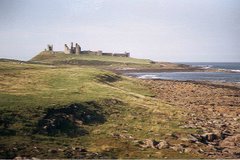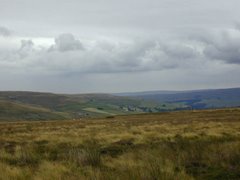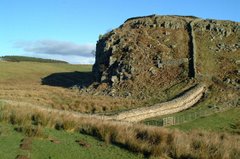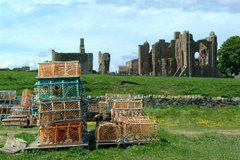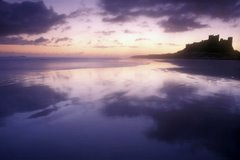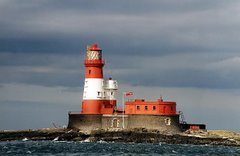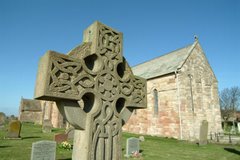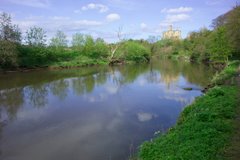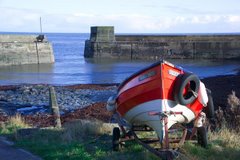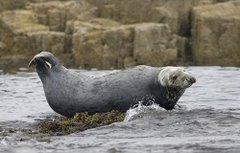
The Northumbrian smallpipes (also known as the Northumbrian pipes) are bellows-blown bagpipes from the north-east of England. It shares the unusual characteristic, (along with the Uilleann pipes played on the knee), of being able to play staccato. Here this is done by giving the chanter a completely closed end. This combined with the unusually tight fingering (each note is played by lifting only one finger or opening one key) means that traditional Northumbrian piping is staccato in style. The chanter has a number of metal keys, most commonly seven, but chanters with a two octave range can be made which require seventeen keys, all played with either the right hand thumb or left hand pinkie. There is no overblowing to get this two octave range, due to the cylindrical bore; the keys are therefore integral, along with the length of the chanter, to obtaining the two octaves. The original (18th century) short keyless chanters only had the range of one octave. The introduction of keyed chanters with a range of more than one octave seems to have happened around 1800, with makers such as John Dunn, and later Robert Reid and his son James. In practice, beginning players find that the seven key chanter, with a range of D to b, is sufficient for playing most of the traditional piping repertoire. Chanters with more keys permit playing tunes with a wider range or with more chromatic notes, and allow access to much of the fiddle repertoire.
Traditionally, the chanter has been pitched somewhere between F and F sharp, older instruments often being close to F sharp; this has now been standardised at what Northumbrian pipers refer to as F+, a pitch where the nominal G sounds approximately twenty cents sharp of F natural. This nominal G, however, is always notated as G. Nowadays, chanters are available anywhere from D to G, F+ being the commonest for solo or ensemble piping, but G being the most popular for playing ensemble with other instruments. There are usually four drones on the Northumbrian pipes, which can be tuned to several different combinations of pitch for playing in different keys. Each drone will usually possess one or more 'bead holes' allowing its pitch to be raised by a tone or two. Different drone tunings can be set up, allowing a piper to play in different keys. Sets with five or even six drones are made, to allow ease of retuning. Only three drones are usually sounded at once, tuned for instance to G, D and g if the tonic of the tune is G. Sets with more than four drones sometimes have drone switches, allowing players to change key without stopping playing.
The traditional and basic style of playing on the instrument is to play each note slightly staccato. Each note is only sounded by lifting one finger or operating one key. The aim is to play each note as full length as possible, but still separate from the next - 'The notes should come out like peas'. The chanter is closed, and thus silent, between any two notes. For decoration, it is common to play short grace notes preceding a melody note. Some pipers allow themselves to play these open-fingered, and hence not staccato, and Billy Pigg was able to get great expressive effects in this way - 'You should be able to hear the bairns crying'. But 'choyting', that is the complex open-fingered gracing after the manner of Highland piping, is generally frowned on, and Tom Clough made a point of avoiding open fingered ornament altogether, considering open-fingering 'a grievous error'.
Article adapted from the
Wikipedia online encyclopedia.






